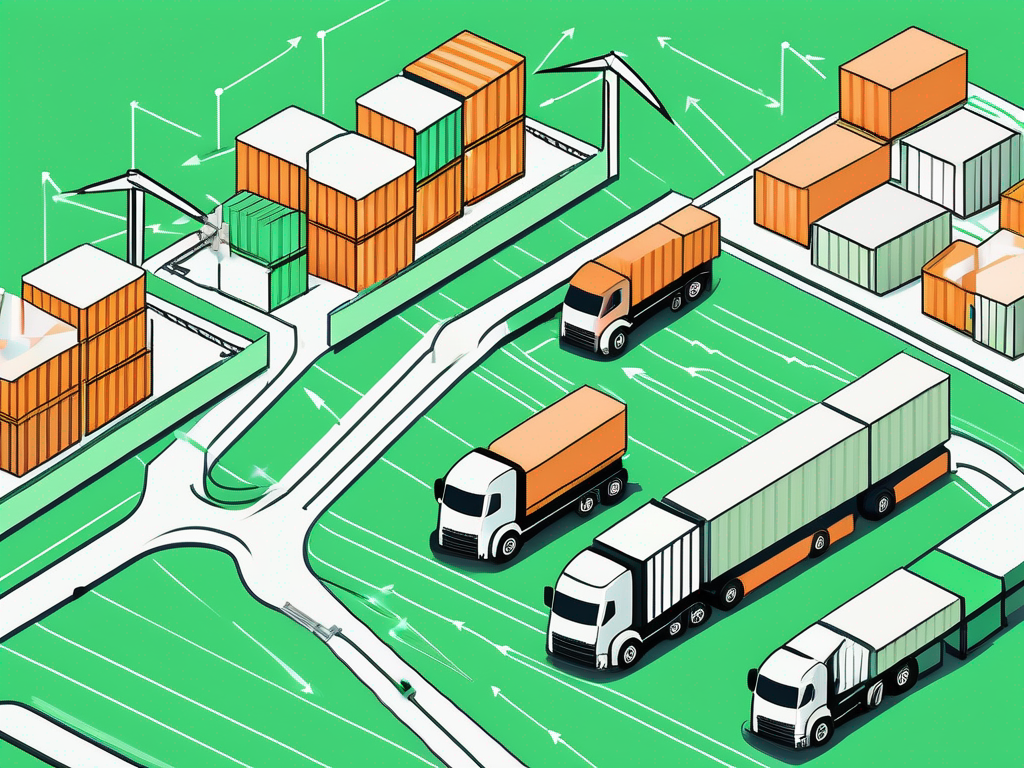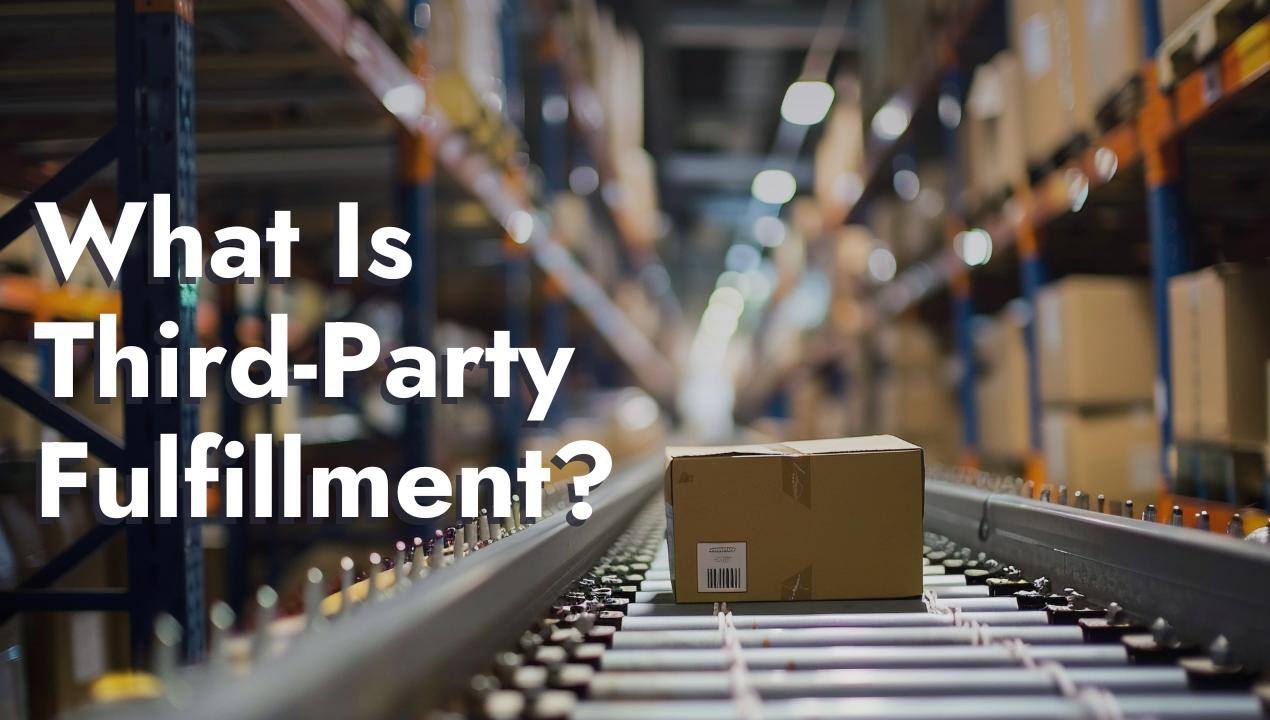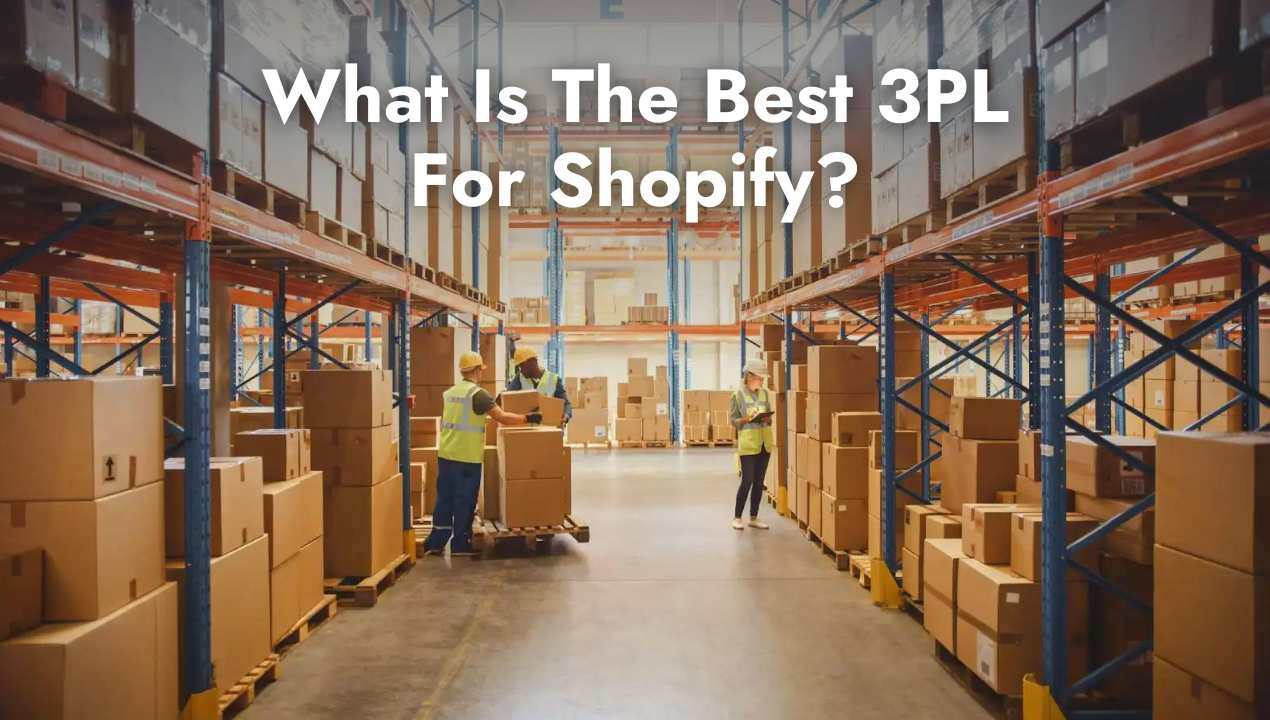Share this
Optimizing Your Supply Chain: A Guide to 3PL Fulfillment and Prep
by Shipfusion Team on Dec. 2, 2024

Optimizing your supply chain is every business' first step to maximizing efficiency, reducing costs, and meeting customer expectations. For many, third-party logistics (3PL) providers are an invaluable help in doing so. This guide explores the impact 3PL fulfillment and prep can have on your operations along with tips for selecting the right partner.
Understanding the Basics of Supply Chain Optimization
Supply chain optimization involves the strategic alignment of operations and logistics to enhance efficiency, reduce costs, and improve service delivery. It encompasses a wide range of activities, from sourcing materials to delivering products to consumers. By streamlining these processes, businesses can significantly boost their competitive advantage. The importance of supply chain optimization has only grown in recent years, particularly as global markets become more interconnected. Companies are now faced with the challenge of not only managing their internal processes but also navigating external factors like geopolitical tensions, trade regulations, and environmental concerns. This complexity requires a more sophisticated approach to supply chain management, one that is agile and responsive to change.
A key component of supply chain optimization is the use of metrics and data analysis. Organizations often employ various key performance indicators (KPIs) to assess their supply chain efficiency. Commonly used KPIs include order accuracy, inventory turnover, and lead time. Collectively, these measures help identify areas needing improvement and guide decision-making for future strategies. Furthermore, the integration of real-time data analytics allows companies to gain insights into consumer behavior and market trends, enabling them to make proactive adjustments to their supply chain operations. This data-driven approach not only helps in forecasting demand more accurately but also in optimizing inventory levels, thus reducing holding costs and minimizing waste.
The Role of 3PL in Supply Chain Management
Third-party logistics (3PL) providers play a pivotal role in the effective management of supply chains. They offer a range of services including warehousing, transportation, and distribution. By outsourcing logistics to these specialists, companies can focus on their core competencies while benefiting from efficiencies that a dedicated provider can deliver. The collaboration with 3PLs also allows businesses to scale their operations more easily, as they can adjust their logistics needs based on seasonal fluctuations or unexpected surges in demand without the burden of maintaining excess infrastructure.
3PLs bring expertise and resources that many businesses may lack. For example, utilizing a 3PL can provide access to advanced technologies and inventory management systems that would be expensive to implement independently. These advantages often translate into faster delivery times and improved customer satisfaction. Moreover, 3PLs often have established relationships with carriers and suppliers, which can lead to better rates and improved service levels. This network can be invaluable, especially for companies looking to expand into new markets or regions where they have limited experience or presence.
Key Principles of Supply Chain Optimization
Effective supply chain optimization often revolves around several fundamental principles. For starters, collaboration is essential. Companies should work closely with suppliers and customers to ensure a cohesive strategy that meets the dynamic demands of the market. This collaborative approach can foster innovation, as stakeholders share insights and best practices that can lead to improved processes and products. Regular communication and feedback loops are vital in maintaining these relationships, ensuring that all parties are aligned and responsive to changes in the marketplace.
Another important principle is flexibility. A company that can quickly adapt its operations in response to changes, such as fluctuating demand or supply disruptions, will maintain its competitive edge. Incorporating technology, such as AI-driven analytics and automation, can greatly enhance this flexibility. For instance, predictive analytics can help businesses anticipate shifts in consumer preferences, allowing them to adjust their inventory and production schedules accordingly. Additionally, automation in warehousing and logistics can streamline operations, reduce errors, and free up human resources for more strategic tasks. By embracing these principles, organizations can create a resilient supply chain that not only withstands disruptions but thrives in an ever-evolving business landscape.
The Importance of 3PL Fulfillment in Business Operations
3PL fulfillment is increasingly recognized as a vital element of modern business operations. It allows companies to meet customer expectations for quick and accurate deliveries while minimizing operational overheads. With consumer behavior shifting toward online shopping, effective 3PL partnerships can be a game-changer.
Smart integration of 3PL services can enable businesses to scale rapidly. For instance, during seasonal spikes, retailers can leverage their 3PL partners to manage increased order volumes without the need for substantial upfront investment in warehousing or staffing.
Defining 3PL Fulfillment
3PL fulfillment refers to the outsourcing of logistics processes to a third-party provider, which manages everything from storing products to shipping them to end customers. This approach can cover various fulfillment activities, such as inventory management, order processing, and returns handling.
A distinguishing feature of 3PL fulfillment is its focus on efficiency and cost-effectiveness. Rather than building an in-house logistics operation, businesses can rely on 3PLs to utilize their networks and expertise to streamline operations, thus enhancing overall productivity.
Benefits of 3PL Fulfillment
Choosing 3PL fulfillment brings multiple advantages. One of the primary benefits is cost savings. Companies can avoid the significant expenses associated with warehousing, staffing, and logistics technology. This allows for a more competitive pricing structure.
Moreover, 3PL providers enable greater scalability. For instance, a new startup can start small while leveraging the 3PL’s infrastructure and capabilities to grow as demand increases. This flexibility can be instrumental for businesses in managing risks associated with unpredictable market fluctuations.
In addition to cost savings and scalability, 3PL fulfillment enhances operational efficiency by providing access to advanced technology and logistics expertise. Many 3PL providers invest in sophisticated software systems for inventory tracking, order management, and data analytics. This technology not only improves accuracy in order fulfillment but also offers valuable insights into customer behavior and inventory trends, allowing businesses to make informed decisions and optimize their supply chain strategies.
Furthermore, partnering with a 3PL can significantly improve customer satisfaction. With a dedicated logistics provider handling fulfillment, businesses can ensure faster shipping times and more reliable delivery services. This is particularly crucial in today’s market, where consumers expect real-time tracking and quick resolutions for any issues that may arise. By enhancing the customer experience through efficient logistics, companies can build brand loyalty and increase repeat purchases, ultimately driving long-term growth.
Preparing for 3PL Fulfillment
Proper preparation is essential before engaging with a 3PL provider. The first step is to critically evaluate your business needs. Companies must assess their current logistics operations and identify areas that require enhancement. This introspection will inform the type of 3PL services that will be most beneficial.
In addition, companies should map out their supply chain processes. This mapping includes understanding their inventory flow, order management, and customer delivery expectations. By recognizing their own operational landscape, businesses can clearly communicate their requirements to potential 3PL partners.
Evaluating Your Business Needs
Evaluating business needs involves examining various factors such as order volume, the complexity of logistics, and seasonal variations in demand. Businesses also need to consider their specific industry requirements, as some sectors have specialized needs that generic 3PL providers may not address effectively.
It can also be helpful to gather input from various departments, including sales, marketing, and customer service. Listening to different perspectives can provide a holistic view of logistics needs and highlight potential opportunities for improvement.
Selecting the Right 3PL Provider
Selecting a suitable 3PL provider is critical for successful fulfillment. Businesses should begin by identifying potential partners through research and recommendations within their network. Once a list is compiled, evaluating each provider’s track record, technologies used, and service offerings is essential.
Furthermore, businesses should assess cultural fit, as collaboration is key to a successful partnership. The ideal 3PL provider should share similar values and priorities, facilitating a seamless operational integration. Establishing clear communication channels during this selection process can prevent misunderstandings and align expectations from the outset.
Implementing 3PL Fulfillment in Your Supply Chain
The implementation of a 3PL fulfillment strategy requires careful planning and execution. Businesses need to ensure that their internal systems align with those of the chosen 3PL provider. This may involve integrating software for inventory management, order tracking, and communication.
Successful implementation also calls for employee training. Staff must understand changes in procedures and technology to maximize efficiency. Transitioning to new systems can pose challenges, but addressing these areas proactively will mitigate disruption.
Transitioning to a 3PL Model
Transitioning to a 3PL model often requires restructuring existing logistics processes. Businesses should prepare for a period of adjustment where old and new systems run concurrently. This phase allows for troubleshooting and refining operational practices before full implementation.
During this transition, clear communication with all stakeholders is crucial. Keeping employees and customers informed about changes builds trust and ensures a smoother shift to the new model.
Monitoring and Improving 3PL Performance
After implementing 3PL fulfillment, ongoing monitoring of performance is necessary to ensure that objectives are met. Regularly reviewing KPIs such as delivery times, accuracy rates, and customer satisfaction provides critical insights into performance trends.
In addition to monitoring, creating a feedback loop with the 3PL provider can lead to continuous improvement. Engaging in regular evaluations of service levels and addressing any discrepancies promptly allows both parties to work collaboratively toward enhancing service delivery.
Future Trends in 3PL Fulfillment and Supply Chain Optimization
The future of 3PL fulfillment is likely to be shaped by various emerging trends that reflect broader changes in technology and consumer expectations. One notable trend is the increased integration of technologies such as artificial intelligence, machine learning, and robotics into logistics operations.
These technological innovations can enhance operational efficiency, reduce human error, and accelerate order processing. Providers that adopt these advancements will likely have a competitive advantage in delivering higher service levels.
Technological Innovations in 3PL
Technological innovations in the 3PL sector are driving efficiency and accuracy in supply chain operations. For instance, AI algorithms can predict demand fluctuations and help optimize inventory levels. This predictive capability allows businesses to minimize stock-outs and overstock scenarios.
In addition, adopting automated warehousing solutions enables faster process speed and reduced labor costs. Robotics can handle repetitive tasks such as sorting and packing, freeing up human workers for more complex responsibilities. Embracing these technologies can transform the operational landscape for many businesses.
Sustainability in Supply Chain Optimization
Sustainability is becoming a central focus within supply chain optimization. Companies are not only striving for efficiency but also aiming to reduce their environmental impact. This involves rethinking packaging, optimizing transportation routes, and considering the sustainability of sourcing materials.
Emphasizing sustainable practices can enhance a brand's reputation among consumers who prioritize eco-friendly options. As businesses shift toward greener operations, working with 3PL providers that share these sustainability goals will be pivotal in achieving environmental targets while optimizing supply chains.
Your Business Deserves the Best 3PL Fulfillment and Prep
A well-optimized supply chain supported by the right 3PL provider can transform your business, reducing costs, improving delivery times, and enhancing customer satisfaction. As your logistics needs evolve, partnering with an experienced 3PL like Shipfusion can help you navigate complexity with ease. Reach out today to learn how Shipfusion’s comprehensive fulfillment solutions can help drive your business growth and operational success.
Share this
You May Also Like
These Related Articles

What Is Third Party Fulfillment?

Finding The Right 3PL Ecommerce Fulfillment Partner

What Is The Best 3PL For Shopify?
- April 2025 (18)
- March 2025 (26)
- February 2025 (26)
- January 2025 (37)
- December 2024 (16)
- November 2024 (23)
- October 2024 (22)
- September 2024 (27)
- August 2024 (9)
- July 2024 (8)
- June 2024 (5)
- May 2024 (8)
- April 2024 (8)
- March 2024 (6)
- February 2024 (6)
- January 2024 (5)
- December 2023 (3)
- November 2023 (3)
- October 2023 (5)
- September 2023 (4)
- August 2023 (2)
- July 2023 (1)
- June 2023 (4)
- March 2023 (2)
- October 2022 (1)
- September 2022 (5)
- August 2022 (4)
- July 2022 (7)
- June 2022 (4)
- May 2022 (4)
- April 2022 (6)
- March 2022 (2)
- February 2022 (1)
- January 2022 (3)
- December 2021 (2)
- November 2021 (4)
- October 2021 (2)
- September 2021 (5)
- August 2021 (4)
- July 2021 (4)
- June 2021 (3)
- May 2021 (2)
- April 2021 (3)
- March 2021 (3)
- February 2021 (3)
- January 2021 (2)
- December 2020 (4)
- November 2020 (2)
- October 2020 (4)
- September 2020 (2)
- July 2020 (5)
- June 2020 (4)
- May 2020 (2)
- April 2020 (2)
- March 2020 (4)
- February 2020 (1)
- December 2019 (1)
- May 2018 (1)
- March 2018 (2)
- February 2018 (3)
- January 2018 (3)
- November 2017 (3)
- July 2017 (4)
- March 2017 (3)
- February 2017 (5)
- January 2017 (3)
- December 2016 (4)
- November 2016 (6)
- October 2016 (6)
- October 2015 (1)
- September 2015 (1)
- June 2015 (3)
- May 2015 (3)
- August 2014 (1)
- July 2014 (1)
- March 2014 (1)
- February 2014 (1)